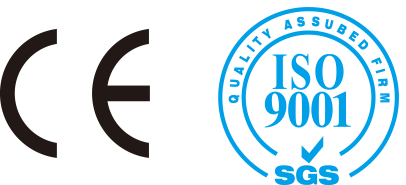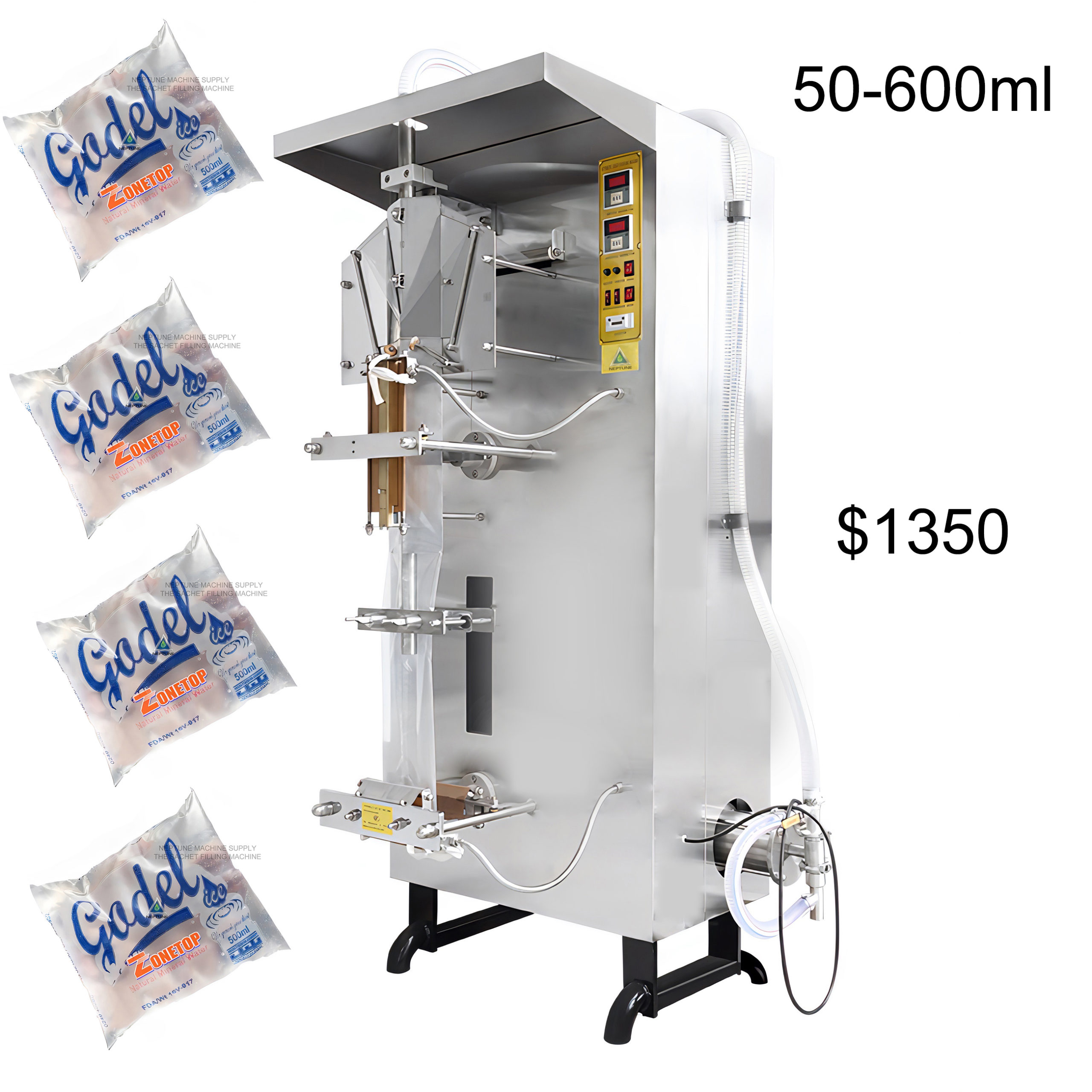What is sachet pure water
Sachet pure water is drinking water that is packaged in small, single-serving sachets made of plastic or other materials. It is commonly sold in developing countries as a cheap and convenient alternative to bottled water. The water is typically purified using a reverse osmosis(RO) water treatment system. The sachets are often discarded after a single use, which can contribute to environmental pollution. Some efforts are being made to promote the use of more sustainable packaging materials and to encourage proper disposal of the sachets to minimize their environmental impact.
is sachet water business profitable?
Bagged water, also known as water sachets or water pouches, is a way of packaging water in small bags that can be a profitable business model when done correctly.
| Cost | $0.01 |
| Wholesale price | $0.02-0.03 |
| Profit | $0.01-0.02 |
| Month capacity of production | 600,000psc |
| Month Profit | $6000-12000 |
One of the main factors to consider is the cost of producing the water sachets and the selling price. On average, it costs less than $0.01 to produce a water sachet with a size of 250-375 ml, and it can be sold at a wholesale price ranging from $0.02 to $0.03, providing a significant profit margin.
Water sachets are in high demand in developing countries where access to safe drinking water is limited, as they offer a low-cost solution for providing clean water. Water sachet plants can be successful in areas with populations of over 25,000-30,000 people that do not have access to safe drinking water. These plants can make profits of over $10,000 per month .
One benefit of water sachets is that they use less plastic than bottled water, making them more environmentally friendly. They also require less space for production and have lower start-up costs compared to bottled water plants. Water sachets can be shipped at a low cost and can be sold by street vendors, creating job opportunities in the local community.
NEPTUNE MACHINERY can assist with setting up a water sachet business by providing RO water purification equipment and water sachet machines. They can also provide guidance on how to build a successful operation.
Step To Do Sachet Water Project
Starting a sachet water business would likely require some research and planning. Here are some steps that you may want to consider:
Research the market
It is important to understand the demand for sachet water in Nigeria and the competitive landscape. You should also research the regulations and requirements for producing and selling sachet water in Nigeria.
Develop a business plan
A business plan can help you identify your target market, set goals and objectives, and develop a strategy for achieving them. Your business plan should include a financial plan, marketing plan, and operations plan.
license and register
The process for obtaining a license and registering a business that produces and sells sachet water may vary depending on the location and specific regulations in place. In general, however, the following steps may be involved:
- Research local laws and regulations: It is important to familiarize yourself with the specific requirements for producing and selling sachet water in your area. This may include obtaining necessary permits and licenses, following food safety regulations, and meeting other requirements for water treatment and production.
- Obtain necessary licenses and permits: Depending on your location, you may need to obtain a variety of licenses and permits in order to legally produce and sell sachet water. This may include a business license, a food handling permit, and any other licenses required for your specific type of business.
- Register your business: In order to operate legally, you will need to register your business with the appropriate government agency. This may involve filing paperwork, paying fees, and providing information about your business and its operations.
- Follow proper food safety practices: It is important to follow proper food safety practices in order to produce and sell high-quality, safe sachet water. This may include implementing proper water treatment processes, maintaining clean and sanitary facilities, and following other food safety guidelines.
- Stay up to date with regulations: It is important to stay up to date with any changes to local laws and regulations that may affect your business. This may include obtaining additional licenses or permits as required, and ensuring that your business is in compliance with all relevant regulations.
Location And Water Resource
Choose a location: Select a location for your business that is easily accessible to your target market and has the necessary infrastructure, such as water and electricity.
In order to determine the best location for a sachet water project, it is important to consider the availability of a reliable water source.
If the project will be connected to a city’s water supply, it is important to ensure that the supply is not frequently interrupted and that the pressure is sufficient.
If a reliable water source is not available, alternatives such as drilling a well or borehole is necessary, but this options can come with additional drilling costs. The good news is future water cost is free and water resource control by yourself is better than depend city water.
Electricity
When planning a sachet water project, it is important to consider the availability and reliability of electricity. This may include factors such as the voltage and phase of the electrical supply, as well as the frequency of power outages. If the area is prone to power failures, it may be necessary to have a generator on hand to ensure continuous operation of the project. The type of generator required will depend on the frequency and duration of power outages and the size of the project.
Water quality report
It typically includes information about the levels of various contaminants and other substances present in the water, as well as the potential health impacts of these substances. The report may also include information about the sources of the water, the treatment processes used to purify it, and any potential risks associated with the water supply. Most sachet water plant is small and choice city water and borehole water as resource. It is not very necessary to got a water quality report. But if you choice river water, lake water, river water and salt water. It must need a water quality report.
budget
Cost is a significant factor to consider when setting up a sachet water plant. Some people choose to start with a smaller capacity plant and expand or upgrade later, but this requires careful planning. It is often more cost-effective to start with a larger, higher-quality plant that can meet the needs of the community and prevent competition from entering the market and potentially taking away customers. However, it is important to carefully assess the costs and benefits of different options and choose the one that is most suitable for the specific project and community.
sachet machine needed
An RO water treatment machine is a device that uses this technology to purify water. It typically consists of a series of filters and a membrane that is designed to remove a wide range of contaminants, including bacteria, viruses, and dissolved solids. It is known for its high level of effectiveness in removing contaminants and their ability to produce high-quality drinking water.
A sachet water filling and sealing machine is a type of packaging machine that is used to fill and seal small packets or sachets of water. These machines typically consist of a filling system, a sealing system, and a cutting system. The filling system is responsible for accurately measuring and dispensing the correct volume of water into each sachet. The sealing system then seals the sachet to prevent contamination or leakage. The cutting system is responsible for trimming the excess material from the sealed sachet to create a finished product. Sachet water filling and sealing machines are commonly used in the production of small packets of purified drinking water, which are often sold in developing countries as a cheap and convenient alternative to bottled water. These machines are designed to operate quickly and efficiently, with the ability to produce large volumes of sachets per hour.
Workshop
The size of a sachet water plant is determined a space of approximately 20 square meters (200 square feet) may be sufficient. However, if the water supply is unreliable, additional space may be needed for raw water tanks. If the plant need a lot sachet machine working together, even more space will be required. It is important to carefully consider the equipment and storage needs of the project.
Selling and market
Set up production and distribution: You will need to procure equipment for producing and packaging the sachet water, as well as vehicles for distribution. You should also develop relationships with suppliers of water and other raw materials.
Launch and market your business: Once you have everything in place, you can launch your business and start marketing it to your target customers. This could involve advertising, promotions, and other marketing activities.
how to setting the sachet water wholesale price
There are several factors to consider when setting the wholesale price of sachet water. Some of the key considerations include:
- Production costs: The wholesale price should cover the costs of producing the sachet water, including the cost of materials, labor, and any other expenses associated with production.
- Competition: It is important to consider the prices of similar products offered by competitors in order to remain competitive.
- Target market: The wholesale price should be set based on the target market for the product, taking into account the price point that is most likely to appeal to potential customers.
- Profit margin: The wholesale price should also allow for a profit margin that is sufficient to sustain the business and provide a reasonable return on investment.
- Taxes and fees: The wholesale price should also take into account any taxes or fees that will be applied to the product.
To determine the appropriate wholesale price for sachet water, it is important to carefully consider all of these factors and to perform a thorough analysis of the costs and potential profits associated with the product.
How To Selling Sachet Water
Identify Potential Customers:To wholesale sachet water, you will need to identify potential customers who are interested in purchasing the product in large quantities. This may include retailers, distributors, or other businesses that are interested in reselling the product.
Offer high-quality water
To sell sachet water successfully, it is important to offer a product that is of high quality and meets the needs of customers. This may involve sourcing water from a reliable source, implementing effective treatment processes, and using high-quality packaging materials.
Price competitively:
In order to attract customers, it is important to price the product competitively, taking into account the costs of production, competition, and the target market.
Promote the product:
To sell sachet water effectively, it is important to promote the product and make it known to potential customers. This may involve advertising, social media marketing, and networking with industry professionals.
Build relationships with customers:
Building strong relationships with customers can help to establish trust and loyalty, which can lead to repeat business. This may involve providing excellent customer service, responding to customer inquiries and concerns promptly, and offering value-added services such as delivery or flexible payment options.
Offer incentives to customers:
Offering incentives such as discounts or loyalty rewards can be a good way to encourage customers to choose your product over competitors.
Stay up to date with market trends:
To sell sachet water successfully, it is important to stay up to date with market trends and the needs of customers. This may involve monitoring customer feedback, staying informed about industry developments, and adapting the business to meet changing market conditions.
how to got funding to start sachet water business
There are a number of ways to obtain funding to start a sachet water business, including:
- Self-funding: One option is to use personal savings or assets to fund the business. This can be a good option for individuals who have the financial resources to do so.
- Bank loans: Another option is to apply for a loan from a bank or other financial institution. To qualify for a loan, you may need to provide a business plan, financial projections, and collateral.
- Grants: There are a number of grants available for small businesses, including those in the water industry. Researching and applying for grants can be a good way to obtain funding without incurring debt.
- Crowdfunding: Crowdfunding platforms such as Kickstarter and Indiegogo allow individuals to fundraise for a project by soliciting small contributions from a large number of people.
- Investor funding: Another option is to seek investment from individuals or organizations interested in funding small businesses. This may involve negotiating equity stakes in the business in exchange for funding.
- Government programs: Some governments offer funding programs or tax incentives for small businesses, including those in the water industry. Researching and applying for these programs can be a good way to obtain funding.
It is important to carefully consider the pros and cons of each funding option and choose the one that is most suitable for your specific business needs and goals.


